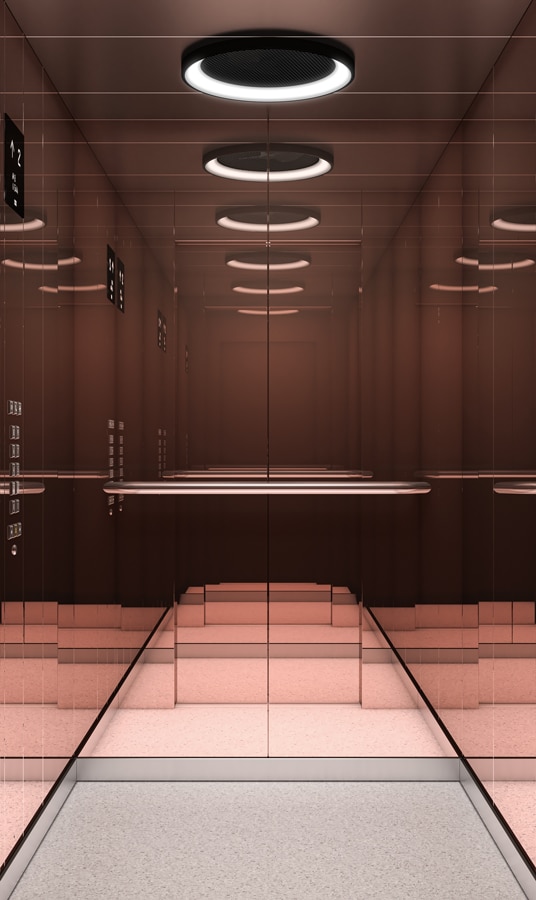Managing VT traffic through the effective usage of technology and a focus on its importance in the post-pandemic world
Due to the ever-increasing movement of people and goods in buildings, a plain-vanilla elevator and service offering will no longer suffice. A thorough and detailed analysis of current traffic flow and further extrapolation of future building requirements and growth, with the necessary provisions, is what seems to create the “wow” factor for customers.
Planning Traffic With Enhanced Technology
KONE has come a long way in the past 20 years in terms of planning for great people flow in complex buildings. It started with calculating and simulating the performance of elevators and other forms of vertical transportation (VT), and has evolved into the KONE People Flow Simulator (PFS), a holistic solution that encompasses end-to-end people-flow planning and advanced analytics for entire buildings — all with full 3D visualization that can be made virtual reality (VR) compatible. Technology is growing at a rapid pace and has proven to play an instrumental role in solving human problems.
The required level of service is achieved by enhancing people flow. People flow is enhanced by improving the handling capacity of elevators, escalators, or stairs, layout solutions and guidance that prevent congestion.
Different buildings target different levels of service depending on their needs. For example, the owners of a high-end building might want to offer users the possibility to move around without waiting and with as much personal space as possible. As an extreme example, busy metro stations with interchanges, or stadiums with huge masses of people, might allow for periods of extreme density in their traffic planning. The required level of service is achieved by enhancing people flow. People flow is enhanced by improving the handling capacity of elevators, escalators, or stairs, layout solutions and guidance that prevent congestion.
Challenges and Complexities in Traffic Analysis
Traffic analysis depends heavily on complex variations in floor populations, entrance/exit locations and control system types to be analyzed quickly and accurately. A traffic analysis covers a variety of important traffic situations, especially when planning new buildings. Reported values are as reliable and comparable as possible. However, performance values depend on the methods of traffic analysis and basic traffic assumptions.
Traffic analysis supports customers in choosing the ideal product or combination of products to handle expected passenger traffic. This process can help customers provide a smooth, safe ride and a pleasant passenger experience, even under the most demanding traffic conditions. This requires a quality analysis done by professionals as the accurate modeling of how people use elevators and behave in emergencies is the key to successful people flow planning.
PFS at KONE
PFS was created due to an increasing need to plan the way people move in and between buildings in a holistic manner.
PFS is an advanced planning tool that allows KONE to create a 3D simulation of the entire building scaled to the exact floor plans, enabling clients to visualize users navigating the building, understand the space more efficiently, place equipment in correct spots and avoid bottlenecks. Also, clients get to see/understand how people would use their building rather than just look at numbers on paper.
While still in development, PFS was put through its paces in an existing building to assess and simulate traffic stress and people flow bottlenecks for a crowd-control project. The simulation caught the eye of developers who then invited KONE to conduct a virtual walk-through of a yet-to-be constructed building.
Combined with these technology enablers, human experience and expertise also play a predominant role in arriving at a higher precision of traffic flow analysis.
Combined with these technology enablers, human experience and expertise also play a predominant role in arriving at a higher precision of traffic flow analysis.
Impact of the Pandemic and Strategies Undertaken
Smart management of people flow in the post-pandemic world is not a choice, but a necessity. Before, elevator cars and lobbies would be tightly packed during the busiest hours to avoid long waits. Almost overnight, COVID-19 changed that. Compared to pre-pandemic operations, physical distancing stipulates that only a fraction of a building’s population can be transported by elevator systems.
Physical distancing rules will have a dramatic impact on elevator systems’ capacities to transport people to their destinations. These rules vary by geographic region and local government requirements. Still, even the least conservative, 1-m physical distancing rule will have a dramatic impact.
While physical distancing rules need to be taken into account, here are a few additional actions that can be taken to ensure safe travel in buildings:
Restrict the population allowed into the building at one time.
Manage crowding through operations — eliminate concentrated peak travel times with prolonged movement over a longer time.
This is uncharted territory for all of us. We are trying out various techniques and best practices in our upcoming projects and hope to provide the best analysis and results to our clients.

Get more of Elevator World. Sign up for our free e-newsletter.







